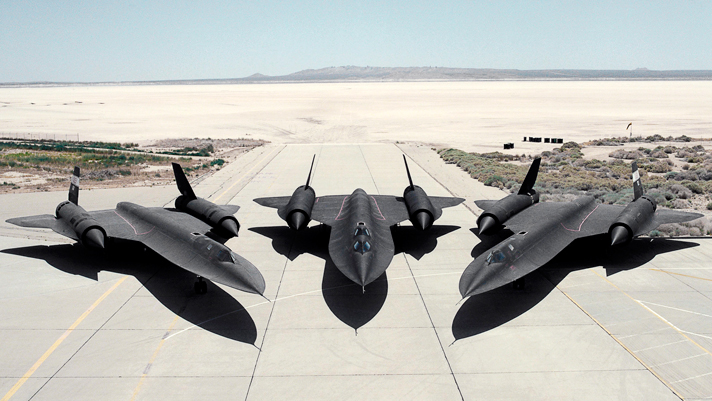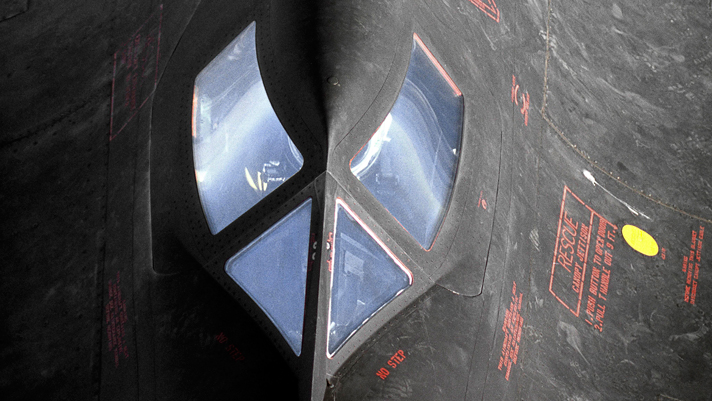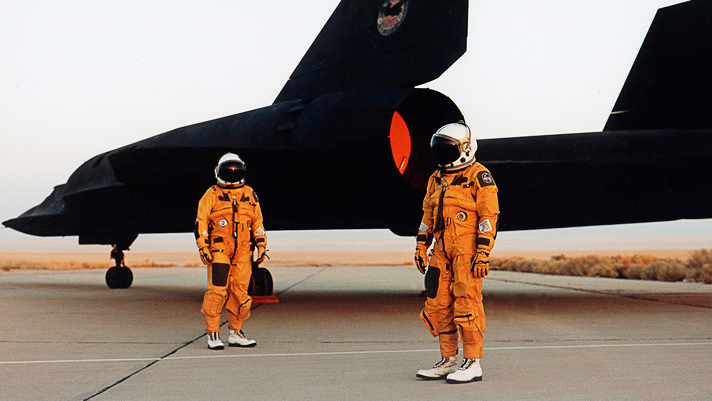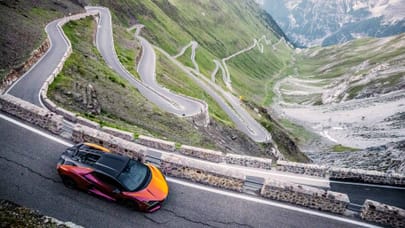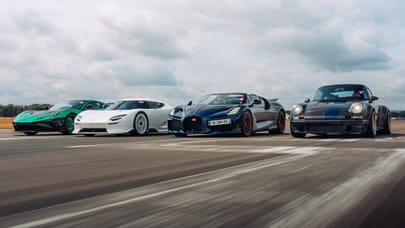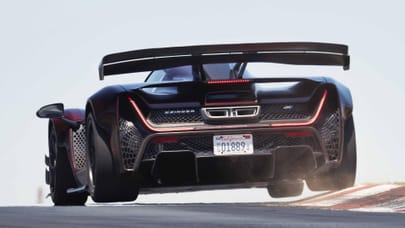
James May’s guide to engineering: Blackbird
The SR-71 ‘Blackbird' is one of those machines, like Concorde and the Ronco Buttoneer, that makes you wonder if humankind's quest for progress has actually gone into reverse*. Where is its successor, and why has the desire to travel at Mach 3-plus gone away?
The Blackbird retired in 1998, but since 1976 has held the world speed record for an air-breathing aircraft (the Space Shuttle doesn't count) and the outright speed record for sustained level flight. It also holds the altitude record for horizontal flight, at 85,131ft.
More to the point, the SR-71 did this sort of thing as a matter of course, not for the purposes of nationalistic sabre-rattling. No other aircraft has logged anything like as many hours at Mach 3 (2,284mph). The pre-flight checks may have taken almost a day's worth of man-hours to complete (they take around 15 minutes for a Cessna) but the SR-71 could deliver this sort of performance every time.
The spurs to its extraordinary flight envelope were efficiency and invincibility. During the Cuban Missile Crisis, the pinch-point of the Cold War, America became acutely aware of the vulnerability of its subsonic U-2 spy planes when Major Rudolf Anderson was shot down by a surface-to-air missile, then a relatively new thing.
Speed with altitude was the solution. By flying at Mach 3.2 at 80,000ft-plus, the SR-71 would simply outrun missiles. The SAMs may have been faster - up to Mach 5 - but by the time they had reached the Blackbird's altitude and pursued it, they were spent. Biffing along at that sort of speed, all that way up, also made the Blackbird a supreme photo-reconnaissance platform. In just one hour it could photographically map, in disturbing detail, an area twice the size of England.
The SR-71 was the product of Lockheed's Skunk Works under Clarence ‘Kelly' Johnson, who had also produced the U-2, which in turn was a development of his F104 Starfighter. This was the man jointly responsible, with Hal Hibbard, for the P-38 Lightning, considered a major influence on the finned styling that Harley Earl produced for General Motors. So there's a car connection.
First flying in 1964, the Blackbird stems from a time when the supersonic learning curve was at its steepest. The reasons for its shape, the position of its engines, the inward cant of its fins and even its colour scheme are hugely complex and a subject worthy of a very weighty tome in themselves.
Because of the massive heat generated in flight, the Blackbird was built largely from titanium, and at a time when titanium hadn't yet been hijacked for overpriced bicycle components. Even then, its massive fuel load had to be used as a heat sink because surface temperatures could exceed 500°C. The fuel itself was a bespoke job called JP-7, and refueling the Blackbird in flight called for a modified KC-135 tanker to carry it.
The distinctive ‘chine' around the fuselage, which gives it that duck-bill look, was intended as an experiment in radar stealth. It was discovered, though, that it could create lift from the fuselage. Handy, since at speeds beyond Mach 1 the centre of lift of a wing moves rearwards, leading to nose-heaviness. The chine countered the effect, and allowed the wing to be positioned at a lower angle, which increased speed even further.
It also meant that the Blackbird could fly at massive angles of attack - in layman's terms, nose-up. It was therefore surprisingly manoeuvrable, but sadly more manoeuvrable than its engines would allow. Tight turns could starve them of air, causing them to flame out, and were forbidden.
Looking for more from the USA?
Top Gear
Newsletter
Thank you for subscribing to our newsletter. Look out for your regular round-up of news, reviews and offers in your inbox.
Get all the latest news, reviews and exclusives, direct to your inbox.
While we're on the engines, one enduring problem with supersonic jets is the need to slow the incoming air to subsonic speeds, or to around Mach 0.5. This was achieved partly with bypass flaps on the SR-71's J-58s but also by the central spike, which retracted rearwards as speed increased to produce - and this is PhD stuff - a Mach 1 shockwave in front of the engine's compressors. Behind this was usable subsonic air.
However, the Blackbird's early analogue flight computer wasn't always able to deal with this hideously complicated aerodynamic proposition, leading to rogue shocks and what pilots called an ‘inlet unstart'. This killed the engine, and the resulting asymmetry was so severe that the usual solution was to deliberately ‘unstart' the other engine as well, to regain control, and then relight both.
If it went badly wrong, then a Blackbird pilot ejecting at 85,000ft had plenty of time to compose excuses for the bar. In a pressurised spacesuit with its own oxygen supply, he would free-fall all the way to 15,000ft before his chute opened.
Thirty-two Blackbirds were built, after which the tooling was destroyed. Twelve were lost, none as a result of interception.
In 1990, an SR-71 was flown to Washington to be put on permanent display in the Smithsonian Air and Space Museum. En route, it broke the record for 2,300-mile flight from LA to Washington, previously held by a Lear Jet at 4hrs 12mins. The Blackbird did it in 64 minutes.




